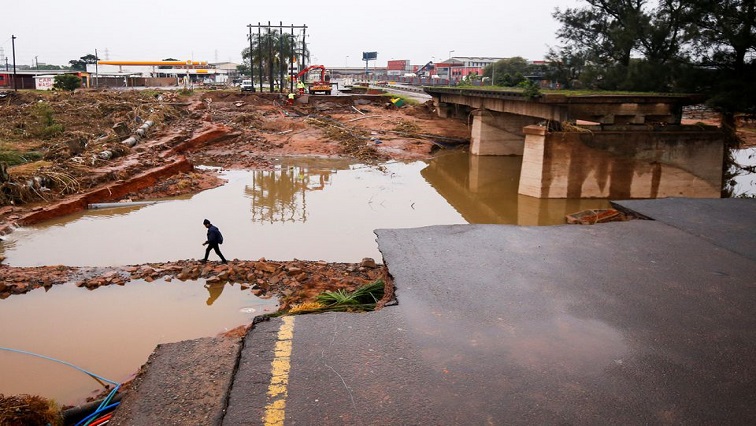Global warming made the heavy rains behind South Africa’s devastating floods last month twice as likely as they would have been if greenhouse gas emissions had never heated the planet, scientists said on Friday.
Flash floods in KwaZulu-Natal and Durban in particular killed 435 people and left tens of thousands homeless.
Ten billion rand of damage was caused to roads, power lines, water pipes and one of Africa’s busiest ports.
The World Weather Attribution group analysed weather data and digital simulations to compare today’s climate with that before the industrial revolution in the late 1800s, when the world was more than two degrees Fahrenheit cooler.
A report of that study said such an extreme rainfall episode would be expected to happen about once every 40 years without human-caused global warming.
That’s now reduced, it said, to about once every 20 years.
Attributing specific weather events to climate change is a tricky business that deals in probabilities and not certainty.
However, co-author Friederike Otto of Imperial College London, said the study had examined data from the wider region, not just Durban.
Africa’s southeastern coast is on the front line of seaborne weather systems that, scientists says, climate change is intensifying.
South Africa’s northern neighbour Mozambique has suffered multiple cyclones and floods in the past decade, including one in April that killed more than 50 people.
Road and rail damage
Last week, Transport Minister Fikile Mbalula said repairs to roads damaged by the floods are expected to cost R542.5 million.
He was assessing the extent of the damage by traveling to various roads and railway lines in and around the Durban metro.
The floods left a trail of destruction of both road and railway infrastructure.
Mbalula visited the N2 near Umgababa south of Durban where the northbound lanes were closed after the floods because of a sinkhole.
He said they are prioritising interim measures to ensure communities have access where the roads are partially closed.
“The repairs of alternative roads while these interim measures are in place will be prioritised and accelerated so as to make it possible for the affected families to be able to use them again as soon as possible. The repair and rehabilitation on the N2 and N3 are already under way at the total cost of R542.5 million this work will be funded from the Sanral budget.”
Mbalula said the railway network was also severely damaged.
“The Prasa Rail network in KwaZulu-Natal has not been spared by the devastation of the floods. The disaster compounded the already challenging rail network that had been hit hard by theft and vandalism of rail infrastructure. The service recovery for commuter rail will be undertaken in phases due to the severity of the impact of the floods on the railway network. The quantum costs for the repairs and rehabilitation of the rail network affected by flood damages is estimated at R3.3 billion.”
Assessment by mayor
– additional reporting by Reuters


